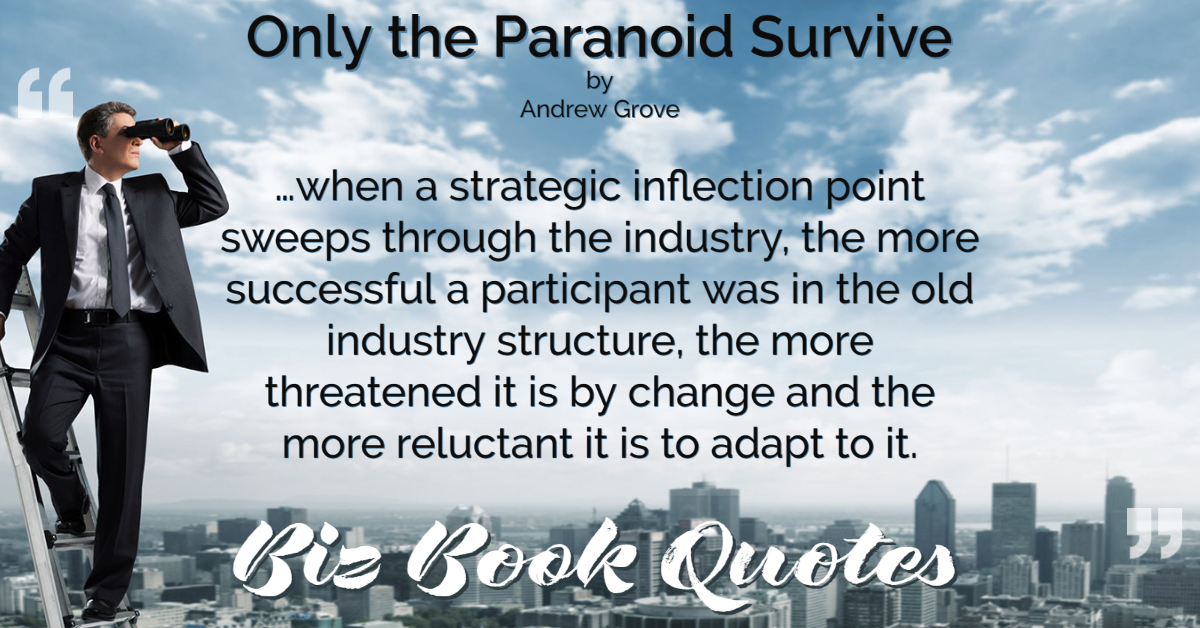 |
…when a strategic inflection point sweeps through the industry, the more successful a participant was in the old industry structure, the more threatened it is by change and the more reluctant it is to adapt to it.
|
050 |
 |
…in this hypercompetitive horizontal world, opportunity knocks when a technology break or other fundamental change comes your way. Grab it.
|
051 |
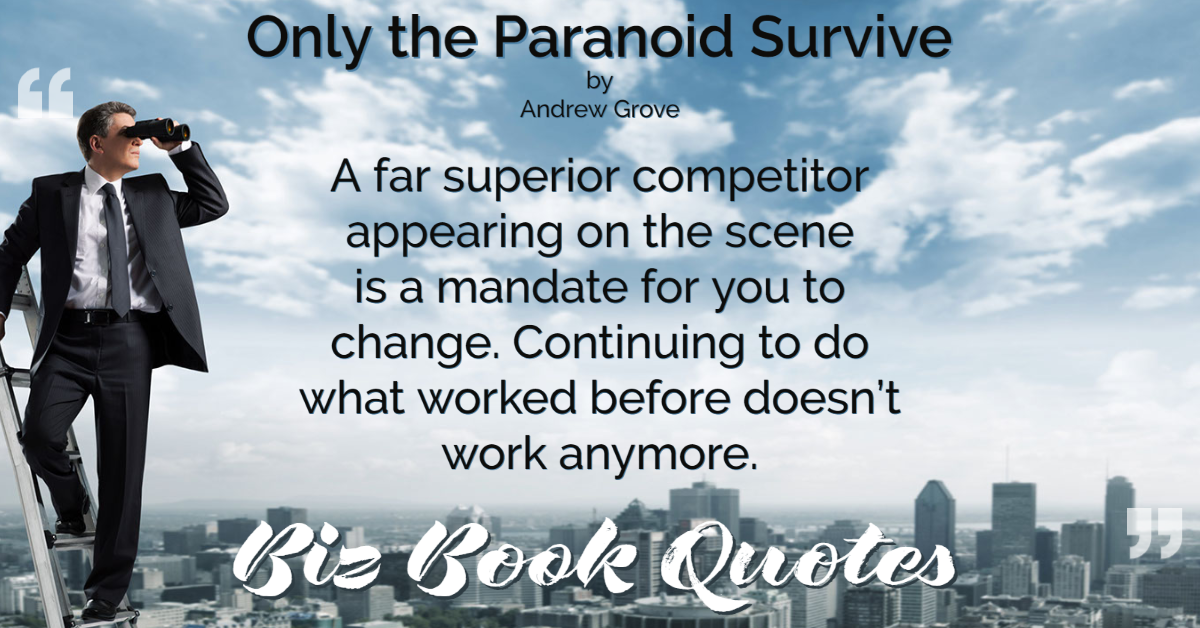 |
A far superior competitor appearing on the scene is a mandate for you to change. Continuing to do what worked before doesn’t work anymore.
|
057 |
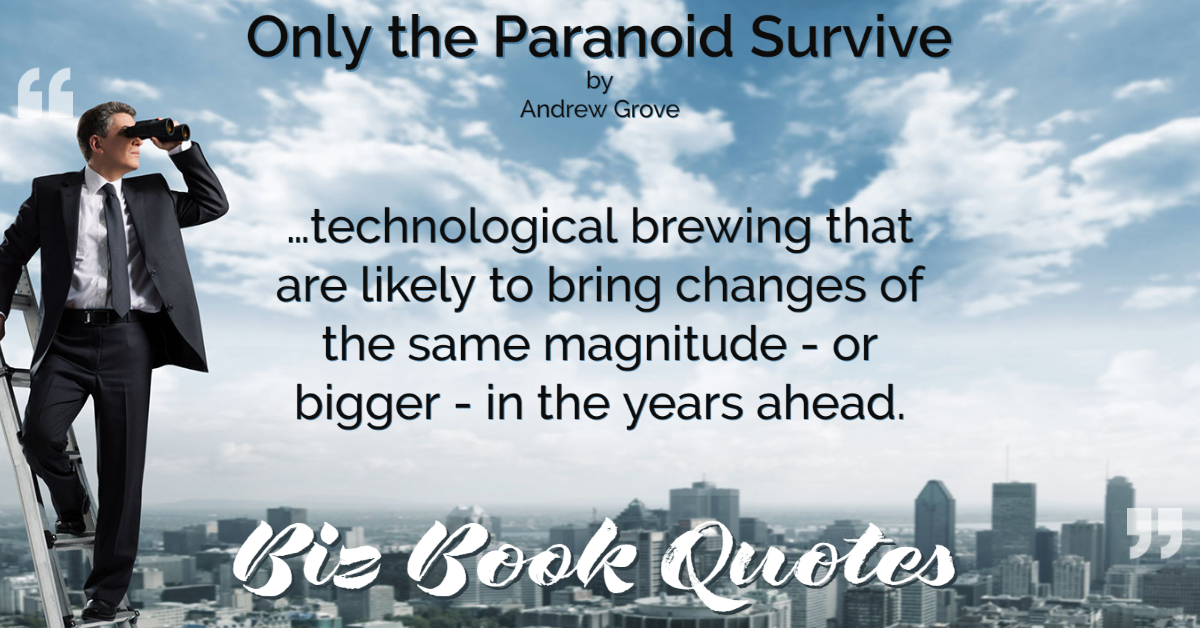 |
…technological brewing that are likely to bring changes of the same magnitude – or bigger – in the years ahead.
|
060 |
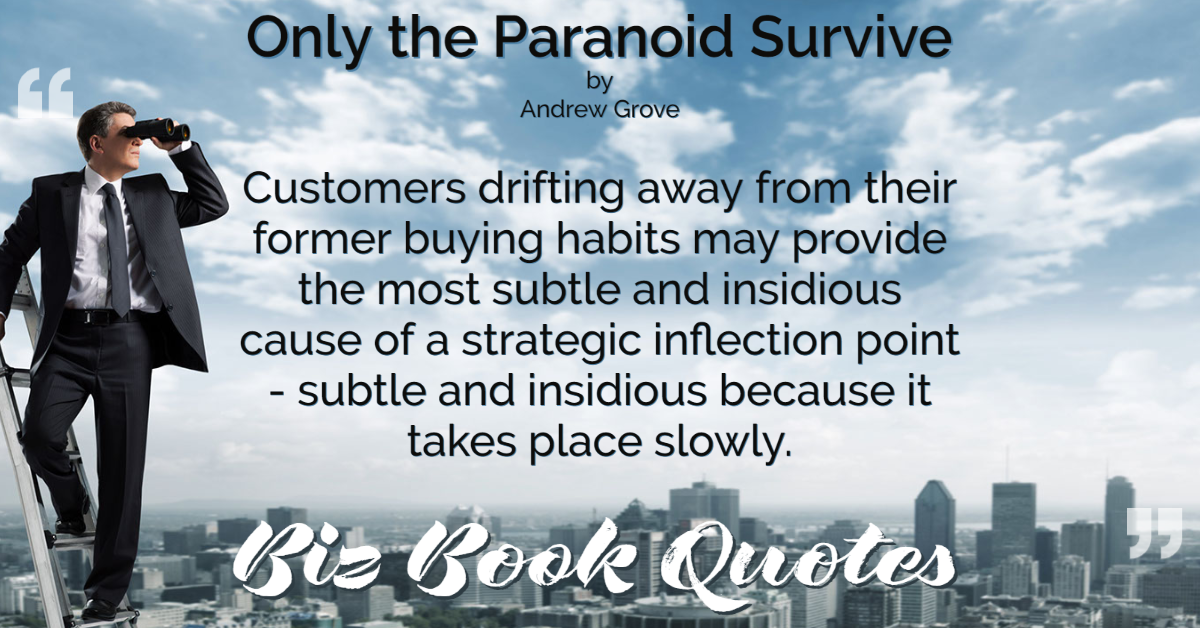 |
Customers drifting away from their former buying habits may provide the most subtle and insidious cause of a strategic inflection point – subtle and insidious because it takes place slowly.
|
065 |
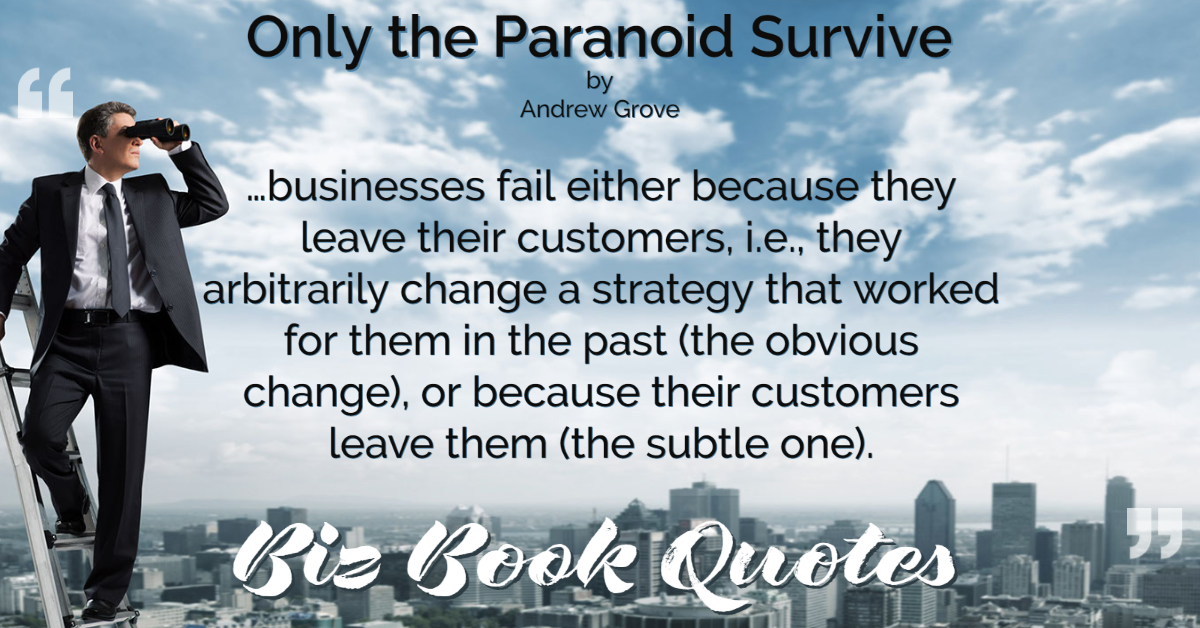 |
…businesses fail either because they leave their customers, i.e., they arbitrarily change a strategy that worked for them in the past (the obvious change), or because their customers leave them (the subtle one).
|
065 |
 |
When most companies of a previously regulated economy are suddenly thrust into a competitive environment, the changes multiply.
|
076 |
 |
…in times of fundamental change… the cliché ‘adapt or die’ takes on its true meaning.
|
076 |
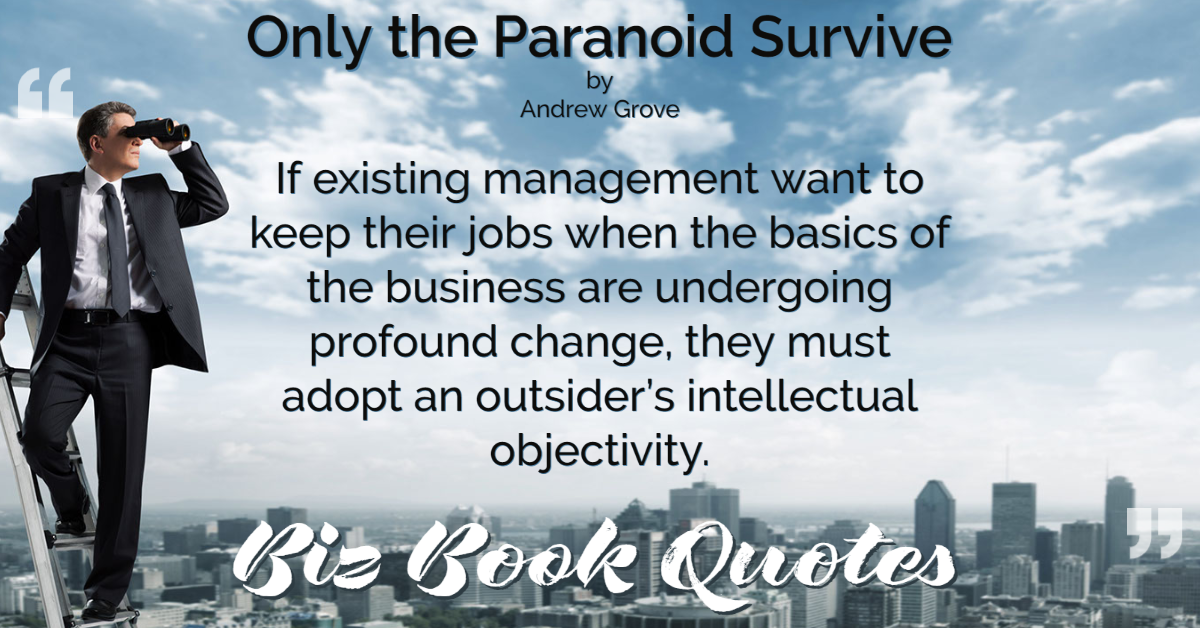 |
If existing management want to keep their jobs when the basics of the business are undergoing profound change, they must adopt an outsider’s intellectual objectivity.
|
093 |
 |
People in the trenches are usually in touch with impending changes early.
|
097 |